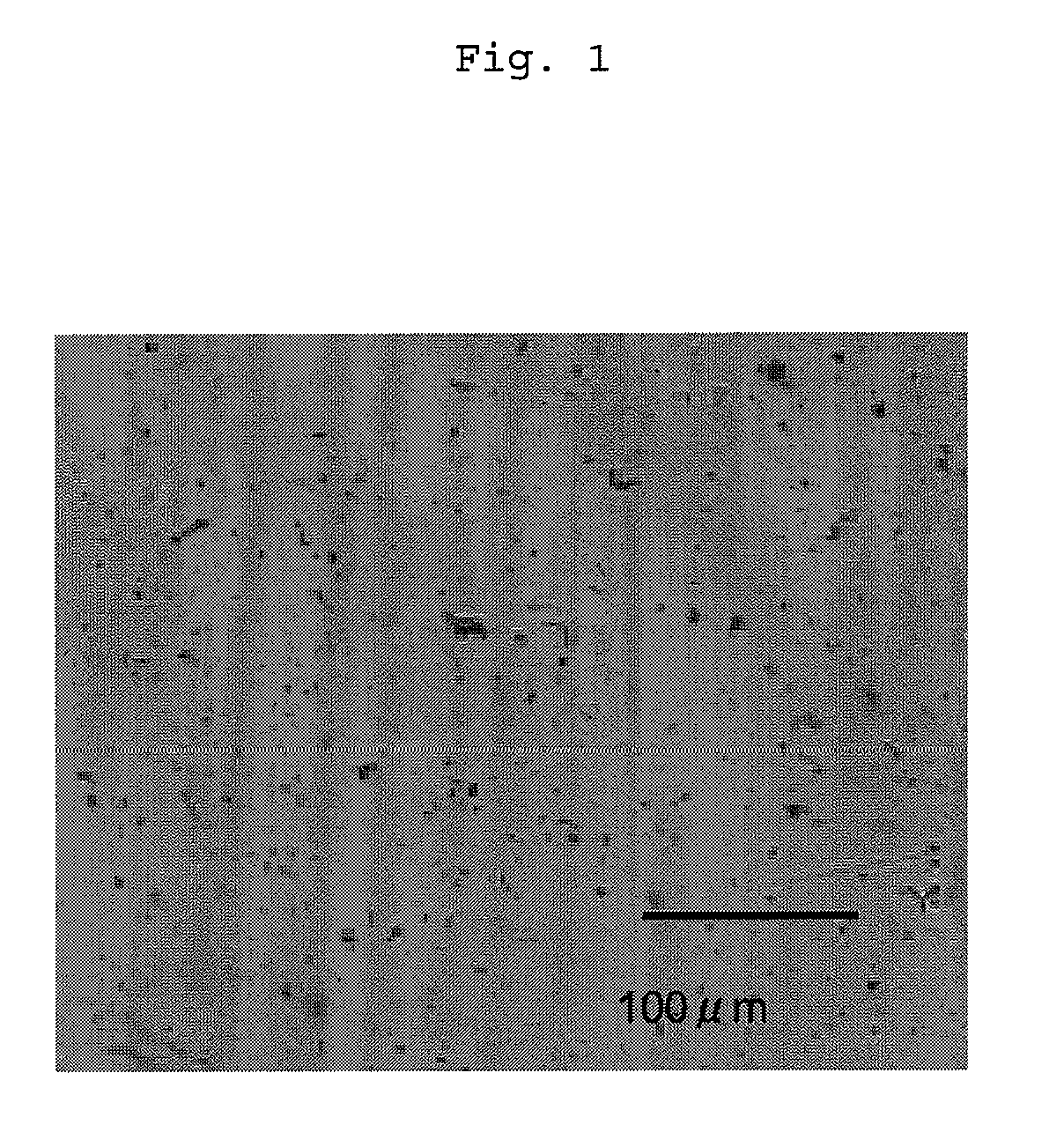Resin composition and process for the production thereof
- Summary
- Abstract
- Description
- Claims
- Application Information
AI Technical Summary
Benefits of technology
Problems solved by technology
Method used
Image
Examples
referential example 1
Preparation of Boron Nitride Nanotubes
[0150]Boron and magnesium oxide were placed at a molar ratio of 1:1 in a crucible made of boron nitride, and the crucible was heated to 1,300° C. in a high frequency induction heating furnace. The boron and magnesium oxide reacted to generate gaseous boron oxide (B2O2) and a vapor of magnesium. This formed product was transferred into a reactor by means of argon gas, and the temperature was maintained at 1,100° C., followed by the introduction of ammonia gas. Boron oxide and ammonia reacted to generate boron nitride. When 1.55 g of a reaction mixture was fully heated to evaporate a by-product, 310 mg of a white solid was obtained from the reactor wall. Then, the thus-obtained white solid was washed with concentrated hydrochloric acid and washed with deionized water until the water became neutral. Then, the solid was dried under reduced pressure at 60° C. to give boron nitride nanotubes (to be sometimes abbreviated as “BNNT” hereinafter). The thu...
referential example 2
Production of nylon 6 by Polymerization
[0151]In a three-necked flask equipped with a nitrogen-introducing tube, 500 parts by weight of ∈-caprolactam, 10 parts by weight of ∈-aminocaproic acid and 10 parts by weight of water were mixed, followed by degassing and substitution of nitrogen inside the flask. Then, the mixture was stirred and allowed to react at 280° C. under normal pressure, whereby a polymerization reaction proceeded while water was distilled off. After 5 hours, the polymerization was completed, and after the reaction product was cooled to room temperature, a product inside was collected. The resultant polymer was pulverized with a mill and washed in 1,000 parts by weight of deionized water at 100° C. with stirring for 1 hour, and then it was dried under a reduced pressure of 30 mmHg at 80° C. for 24 hours to give nylon 6. The thus-obtained nylon 6 was measured for a relative viscosity in a concentration of 1 g / dl with using 96 mass % concentrated sulfuric acid at a tem...
referential example 3
Production of Nylon 66 by Polymerization
[0152]In a three-necked flask equipped with a nitrogen-introducing tube, 438 parts by weight of adipic acid and 354 parts by weight of hexamethylenediamine were mixed, followed by degassing and substitution of nitrogen inside the flask. Then, under normal pressure, the mixture was stirred and allowed to react at 220° C. for 1 hour and then at 280° C. for 4 hours, whereby a polymerization reaction proceeded while water was distilled off. After completion of the polymerization, the reaction product was cooled to room temperature to give nylon 66. The thus-obtained nylon 66 was measured for a relative viscosity in a concentration of 1 g / dl with using 96 mass % concentrated sulfuric acid as a solvent at a temperature of 25° C., to show 3.10.
PUM
| Property | Measurement | Unit |
|---|---|---|
| Percent by mass | aaaaa | aaaaa |
| Percent by mass | aaaaa | aaaaa |
| Percent by mass | aaaaa | aaaaa |
Abstract
Description
Claims
Application Information
 Login to View More
Login to View More - R&D
- Intellectual Property
- Life Sciences
- Materials
- Tech Scout
- Unparalleled Data Quality
- Higher Quality Content
- 60% Fewer Hallucinations
Browse by: Latest US Patents, China's latest patents, Technical Efficacy Thesaurus, Application Domain, Technology Topic, Popular Technical Reports.
© 2025 PatSnap. All rights reserved.Legal|Privacy policy|Modern Slavery Act Transparency Statement|Sitemap|About US| Contact US: help@patsnap.com



